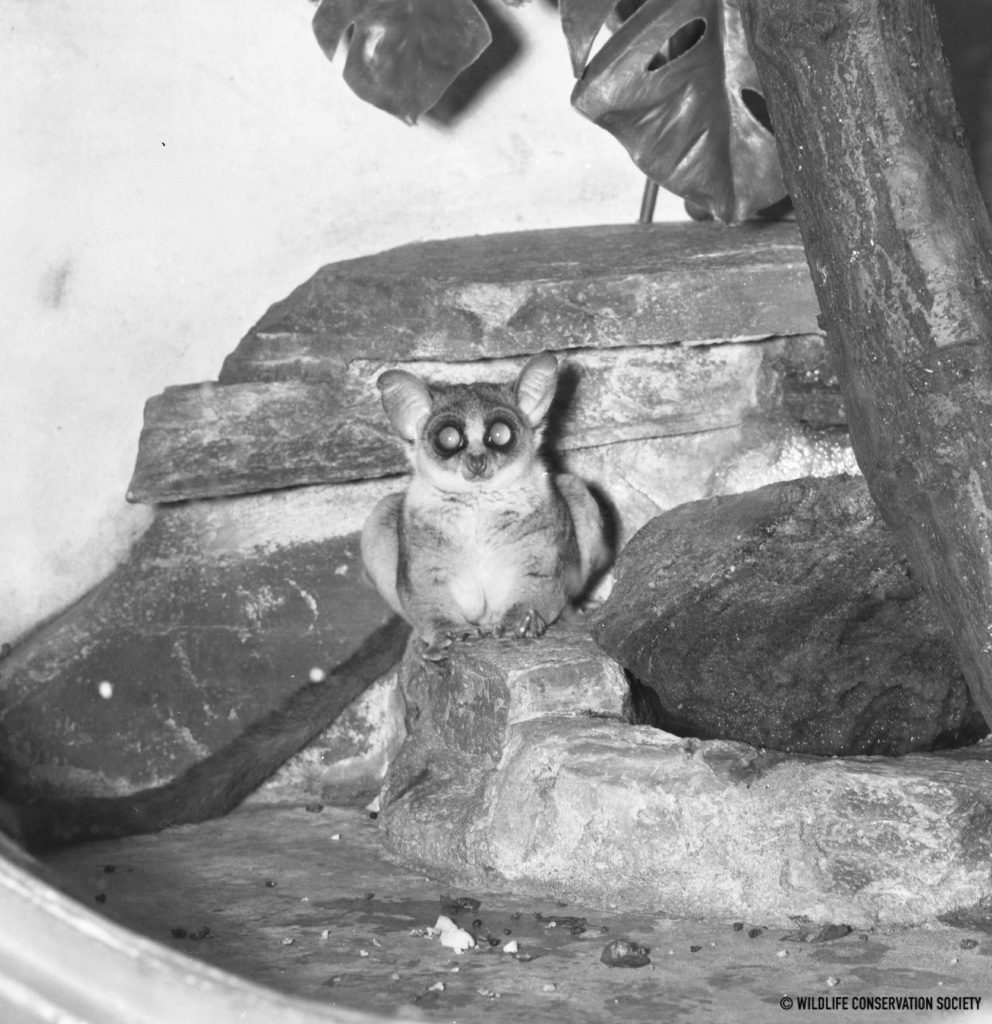
The Wildlife Conservation Society has a collection of approximately 54,000 historical photographic negatives that date back to the opening of the Bronx Zoo in 1899. In order to preserve the integrity of these negatives and enhance access to their historic imagery, the WCS Archives has undertaken an enormous negative re-housing and evaluation project, which began in 2016. The bulk of the collection features photographs of the various inhabitants of the zoo but also documents other aspects of WCS’s history, including images of the New York Aquarium and of early field expeditions. The chronological assessment of these negatives has illuminated important milestones in the Bronx Zoo’s history and evolution to the zoological park it has become today. One such milestone occurred in 1961 in the Small Mammal House.
This post features two residents of the Small Mammal House: a Galago, also known as a Bush Baby, and the African Palm Civet. Prior to 1961 it would have been difficult to view the activity of such animals due to their nocturnal nature, because they rest during the day and become active at night. Zoos had long been seeking methods of exhibiting nocturnal animals in ways that are both engaging to visitors but also suited to the animals’ needs. Through extensive research it was discovered that the cycles of nocturnal animals could be reversed, without negatively impacting the animal, through changes to lighting and exhibit spaces. It was determined that red light, while visible to the human eye, is virtually invisible to nocturnal animals whose retinas are composed of mostly rods. Additionally, by painting the exhibit walls red and using red illumination, the visibility of objects in the space increases for humans while remaining dark in tone to the red-blind eyes of nocturnal animals. Upon the success of these implementations two-thirds of the Small Mammal House was modified in the early 1960s to incorporate red light spaces. These modifications made it possible for visitors to appreciate nocturnal animals during the day. Not only did the red lights benefit visitors to the zoo, but the animals flourished as well. After the red light room first opened on September 15th, two species – the African Palm Civet and the Kinkajou – gave birth. These were the first births that the Small Mammal House had seen in nearly three years. Additionally, another species, the Spiny Anteater, surpassed the previous record for longevity.
The red light rooms proved so successful that the Bronx Zoo received numerous requests for construction details from other zoological parks. This discovery also made it possible for the Bronx Zoo to form definite plans for what had previously been a theoretical new exhibit, the World of Darkness, which opened in 1969. Red light rooms continue to be used throughout the Bronx Zoo to this day.

Cool! It is great when the exhibit benefits everyone, animal and visitor alike! Nice Blog!